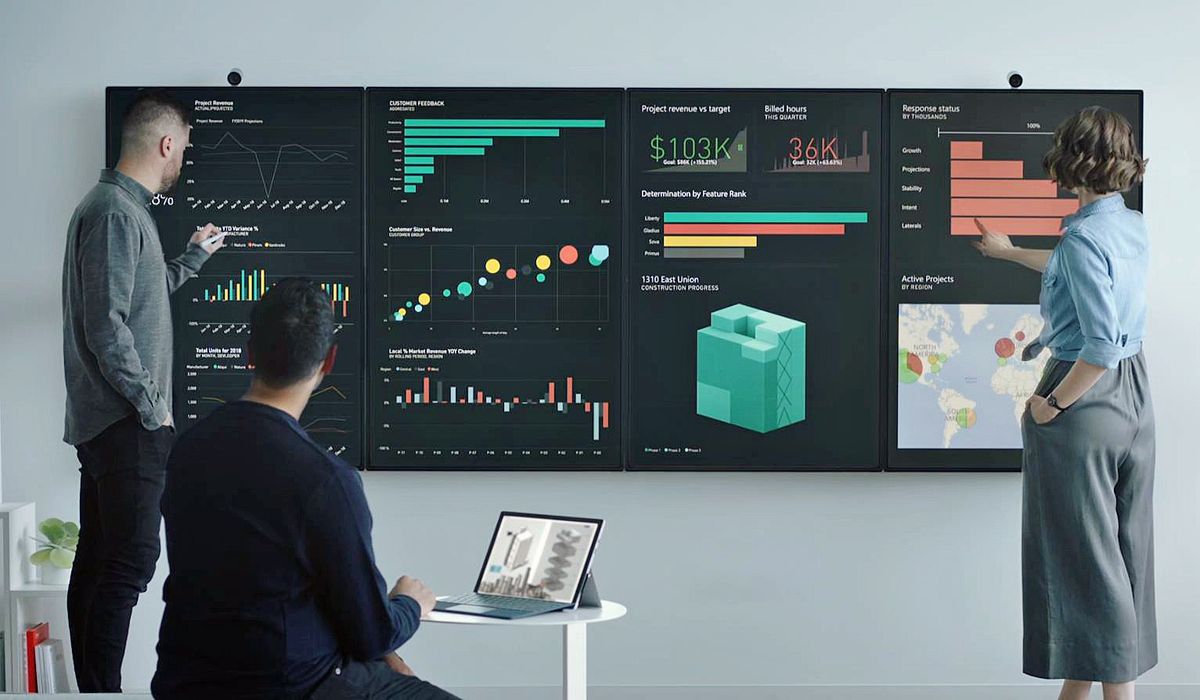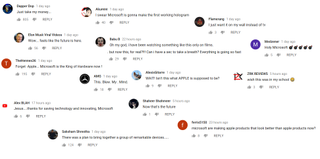Future of Windows is all about collaboration — for businesses and consumers
Microsoft may have finally found its purpose in this world, and it's about breaking down barriers.

The history of Windows has, in a sense, always been about getting things done, whether it's writing a term paper, doing an Excel document, doing supercomputing, or just good ol' Minesweeper. But the world that Windows grew up in has radically changed since the mid-1990s with the growth of the internet.
Back in February, our Senior Writer Zac Bowden reported that the Surface Hub 2 – along with unannounced products like HoloLens 2 and "Project Andromeda" – are part of a concerted effort built around collaboration in the modern workspace, along with productivity and 3D Mixed Reality. The Surface Hub 2 official reveal thisw week affirms that the primary concept behind the device is getting people to work together for idea-expression, whether they are in the same room or across the planet.
Breaking down barriers
Hip jargon, like "dynamic and immersive collaboration", or more recently from Microsoft Build, "planet-scale apps", may sound like PR buzz, but it seems to be all part of a plan for Windows, Azure (Cosmos DB), Xbox, Kinect for Azure, and Surface.
Microsoft Whiteboard – which is still in early preview – Microsoft OneNote, Office 365, Microsoft Team, and Skype, are all about letting people break down barriers. Some of that is language (Microsoft Translator), some of that is distance ("Holoportation", and some is personal (My People on the Windows Taskbar).
All these apps, software, and now even hardware, are very different from the legacy of the desktop PC. The old concept of a terminal that workers slaved behind in isolation (save for the annoying buzz of email) is thankfully dying. A new world where our phones, laptops, wall computers, speakers, and tablets are all connected with instant access to people is the new mission. Sharing information instantly, naturally connecting with co-workers, and busting down those walls is now driving Microsoft.
Future purpose of Windows 10 is clearer
With stable (but not growing) sales of PCs, and the rise of mobile smartphones and dozens of connected devices, Microsoft has been struggling to find its place since 2010. These are not the '90s where the goal was to get a PC into every house and then get people on the world wide web.
Finding the purpose of Windows in 2018 (and beyond) is a challenge. No longer can the OS just run Photoshop or some enterprise software. Those use cases are still important, but those markets are also flat and going nowhere.
Get the Windows Central Newsletter
All the latest news, reviews, and guides for Windows and Xbox diehards.
For all the haranguing around Microsoft CEO Satya Nadella focusing only on the cloud and not Windows, he and the rest of the company appear to be finding a purpose for the OS: letting people connect in new ways. This focus is not just chasing social for fun, but to better express ourselves — and, yes, get work done.
What if Microsoft is building out an army of devices that are designed to work together? Andromeda, Surface Hub 2, and HoloLens 2, built from the ground up to compliment each other. Focus on collaboration, productivity and 3D/Mixed Reality.What if Microsoft is building out an army of devices that are designed to work together? Andromeda, Surface Hub 2, and HoloLens 2, built from the ground up to compliment each other. Focus on collaboration, productivity and 3D/Mixed Reality.— Zac Bowden (@zacbowden) February 16, 2018February 16, 2018
Surface Hub 2 does not have an immediate consumer angle. However, many of the comments and reactions on our stories about Surface Hub 2 seem to suggest people understand where all of this is going. It's not just about whizbang hardware, it's about a theme of letting us do new things with technology (and specifically, Windows PCs) that we first saw in the movies, but no one had the gall to make – until now.
The idea that in a few years a more affordable version of a Surface Home Hub might hit the consumer market seems more plausible after this week's announcement.
Reason to be optimistic about the future

The concept of a modern office stocked with a HoloLens 2, Surface Hub 2, foldable tablets (Andromeda), and Surface Laptops seems not only desirable but increasingly likely. The reason is such technology – and the software behind it – will let humans do new things built around teamwork.
Microsoft is now creating technology that inspires us. That's not an inconsequential thing in a world that has become so cynical. Putting aside innovation in the workplace, Microsoft's recent focus on inclusive design and bringing gamers with all abilities to the living room is also progressing just as quickly, if not faster.
None of this is to suggest Microsoft has everything figured out. But for the first time, it is starting to feel like the company has a master plan for Surface hardware, morphing Windows into a cloud OS, and making ubiquitous computing happen. That's a significant change for a company that used to create products in isolation, with no grand theory behind them.
That sense of purpose for Windows – and Microsoft – has been missing for the last few years. But that makes seeing it for the first time even more exciting.

Daniel Rubino is the Editor-in-chief of Windows Central. He is also the head reviewer, podcast co-host, and analyst. He has been covering Microsoft since 2007 when this site was called WMExperts (and later Windows Phone Central). His interests include Windows, laptops, next-gen computing, and wearable tech. He has reviewed laptops for over 10 years and is particularly fond of 2-in-1 convertibles, Arm64 processors, new form factors, and thin-and-light PCs. Before all this tech stuff, he worked on a Ph.D. in linguistics, performed polysomnographs in NYC, and was a motion-picture operator for 17 years.